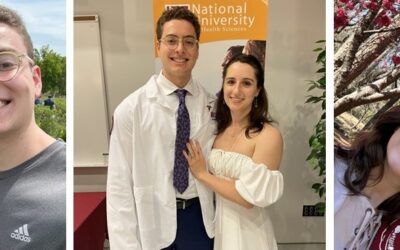This past weekend I took Part I of the National Board of Chiropractic Examiners Licensure exams. We call them Part I Boards for short. Part I is designed to test us on the basic science material all chiropractic schools should teach in the first phase of their programs. Going into the boards I felt prepared thanks to my education at National.
There are six exams that consist of 90 questions each given in a 10-hour period. The subjects of the exams are in the following order:
- General Anatomy
- Spinal Anatomy
- Physiology
- Biochemistry
- Pathologies
- Microbiology
We were allotted 75 minutes for each 90-question examination. There was also a 20-minute break between each exam and an hour lunch after the first three exams. The subjects encompassed a wide array of topics like histology, embryology, neurology, nutrition, public health, and immunology. I was tested on material from almost every class from Phase One. It was difficult but I got through it.

Knowing that everyone in the U.S. who wishes to become a doctor of chiropractic must take these exams gave me a bit of relief for two reasons. I knew my education prepared me for the exams because our school teaches to the highest standard; while other schools are filling time in their curriculum with philosophy, we are taking one of four physiology classes, three pathology classes, two microbiology classes, four anatomy classes with cadaver labs, and two histology and embryology classes. While taking the anatomy exams I was able to think back to the anatomy labs and picture the structures on a real human body. I think that gave me a borderline unfair advantage.
The second reason I am glad I am taking it at NUHS as opposed to upstate New York, Connecticut, or anywhere in the Midwest is the location. We took our written exam at the Courtyard Marriot in Madeira Beach. Between exams I stepped outside onto the balcony to this incredibly relaxing view.

Boards are stressful but we have to do it. Our allopathic counterparts take the United States Medical Licensing Exam (USMLE) and like Part I, they have Step I. Step I consists of eight, 45-question exams in anatomy, behavioral sciences, biochemistry, biostatistics/epidemiology, microbiology, pathology, pharmacology, and physiology. The take away from the comparison is that both our licensure exam and theirs consist of the same subjects with slight alterations. We take spinal anatomy and they take pharmacology as one example. Our exams also consist of 90 questions vs. 45 questions. However, upon looking at both sample questions for each exam, our multiple-choice questions have 4 choices, while theirs consists of 5 choices. The questions seem to be slightly more in depth but cover similar topics.
In my opinion they are simply two different ways to administer similar tests. But I wanted to include the USMLE information for a comparison just to show DCs receive similar training as DOs and MDs.
Now that Part I boards are out of the way, I can focus on studying for my upcoming exams!
If you have any questions please email me at [email protected]




0 Comments